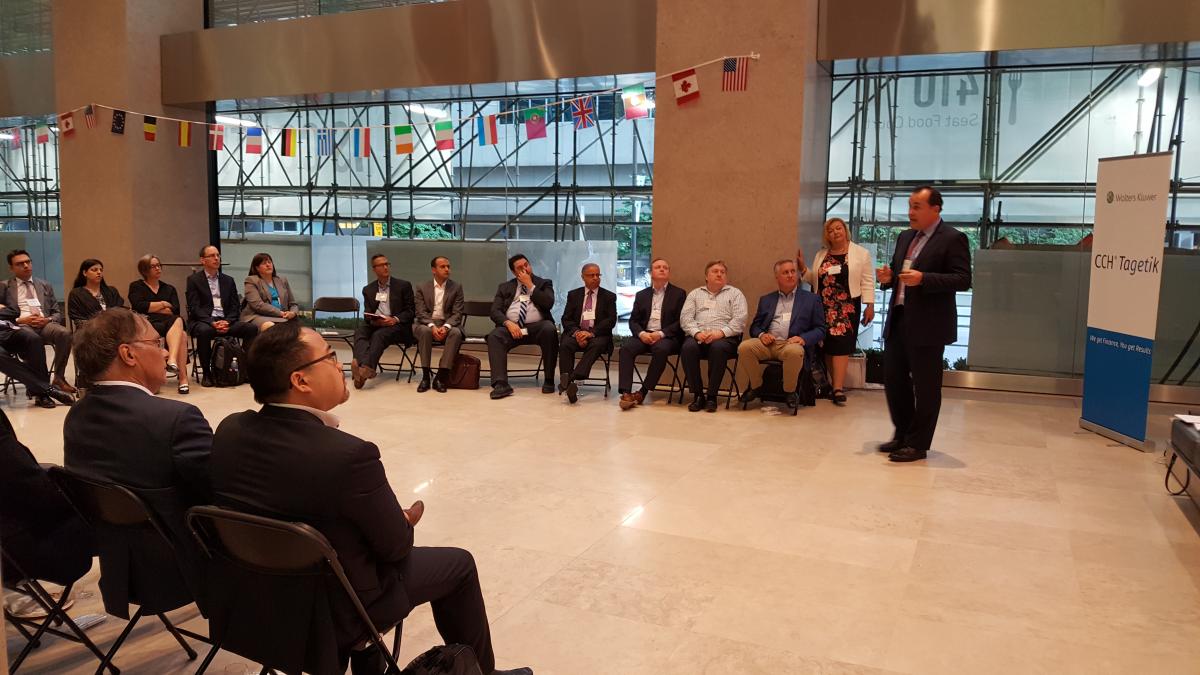 Introduction
Introduction
On June 19th, 2018, International FP&A Board launched the Toronto chapter. There were over 30 attendees, all senior finance executives, from various industries including telecommunications, pharmaceuticals, technology, retail and hospitality.
The topic they were tasked with addressing was “Modern Financial Planning and Analysis: Latest Trends”. I had an opportunity to attend the night as a volunteer and an observer.
Board members were asked to answer the following questions with the results in brackets below;
Question: How long does it take to complete the budgeting cycle?
- 1-3 months (44%)
- 4-6 months (28%)
- > 6 months (28%)
Question: How long is your forecasting cycle?
- < 3 days (16%)
- 3-7 days (48%)
- >7 days (36%)
Question: How many of you have a dedicated planning system? Is it flexible and dynamic?
- Yes (44%)
- No (56%)
How does your company compare to the rest?
Several trends were identified throughout the course of the night such as driver-based forecasting, frequency of forecasting, budget approach (Top-down vs Bottom-up) and the need for real-time data.
Driver-based forecasting
Driver based forecasting was mentioned several times throughout the course of the night. Why is this so important and what are the benefits? Driver-based forecasting increases forecasting accuracy, it is easier to create a forecasting model that is dynamic if it is driver-based. Driver-based forecasting facilities better decision making and can improve efficiency. For example, if a company knows its revenue growth will be X percent, driver-based forecasting will determine what the incremental sales staff required to support that growth will be.
Frequency of forecasting
This was an interesting discussion point, it was generally agreed that forecasts should be done monthly that are focused on the current fiscal year. Rolling 18-month forecast & 3-5 year strategic planning are more detailed and require significant man hours to plan, produce and get agreement on should be done at less frequent intervals.
Budget approach
Most companies use a combination of top-down vs bottom-up. Top-down approach is beneficial as it provides guidance to the functional leaders as to their ‘approved’ YoY growth. The benefit of the bottom-up approach is that functional leaders feel autonomous as they have provided their expected costs and revenues for the upcoming year. However, bottom-up can be time consuming and self-interest can be an issue. Functional leaders can be motivated to deliberately set the bar low can they can overachieve.
Zero-based budgeting is another approach, this essentially looks to ‘trim the fat’ and have departments operating more efficient by justifying each budgeted dollar they are requesting for the new fiscal year.
Need for real time data
In today’s ever-changing environment organizations need data to make decisions. Individuals are all levels of the organization need access to real time data to make decisions. In product driven organization product owners need to know what the profitability of each product is, what the sales of a particular product is in any given province or country. This information should be readily available and easily accessed. However, this is not always the case. Many organizations are facing two major issues when it comes to data; accessing the data in real time and integrity of the data. Organizations should have should have self-serve data though the use of a BI tool and there should be a single source of truth.

Common theme
One common theme emerged and that was the need for timely, accurate and meaningful information to help drive business decisions and how FP&A can play a key role in addressing that need. In today's ever-changing environment, organizations need to have access to the right information to make decisions and grow the business.
It was mentioned during the meeting that in the ideal state, business decisions would be driven 80% by analytics and 20% by judgement. However, the current state of most businesses involves spending 80% of their time in data mechanics and 20% in data analysis.
In any business, there can be multiple sources of data with no single source of truth. FP&A plays a key role in ensuring the integrity of the data by working closely with the BI team.
In the past FP&A was seem primarily as a budgeting function with little or no involvement with the business, with the budgeting process being that one event where there was interaction with the business.
FP&A is now a trusted partner who is imbedded in the business. The stand-out suggestion from the night was ‘to push people (FP&A team) into the business’ – to add value you need to really understand the nuts and bolts of the business.
Getting a seat at the table
Having the right people in the organization is key. The characteristics identified to be successful in an FP&A role are quite different from that of your stereotypical accountant. To succeed in FP&A you need to be inquisitive, ability influence people and have a strong understanding of the business. FP&A no longer operates in a silo, it should have ‘a seat at the table’ and be involved in supporting key business decisions.
To get this ‘seat at the table’, you need to demonstrate real value. The value that FP&A brings is;
- The ability to simplify the message: take complex data and present it in a digestible format that can be easily communicated to the business.
- Challenge assumptions and status quo: FP&A’s role is to challenge the business and look to have the business become more efficient. Zero based budgeting is a budgeting practice that can help achieve this. A healthy tension should exist between the business leaders and FP&A.
- Influences decisions: Ability to influence people at different levels on the organization.
- Strong business acumen: Takes strategy, key initiatives and tie to financial outcomes.
- Financial forecasting: The budget is the starting point, but it is a point in time and does not reflect the latest information. Forecasting provides the business with the latest information both in terms of revenue and costs projections.

Technology
The role of technology is crucial in the evolution of FP&A. Organizations need access to real time data to make decisions based on the most current information. Artificial Intelligence and Integrated driver based planning tools fully integrated with BI are the future. Most organizations are not there yet.
There are several reasons for this;
Cost: Capital investment required can be significant. Organizations have capital constraints, investments in BI & AI are potentially made at the expense of revenue generating initiatives.
No executive buy in: A project of this size that impacts the entire business needs to have the full support of the C-suite. Members of the C-suite act as champions, they ensure that each business functions are aligned.
Lack of clear vision: If you cannot clearly state your vision and show the added value that this brings – funds will not be allocated to this initiative.
Conclusion
Regardless of your industry and size all organizations need to have access to data to drive decisions. This could relate to the profitability of a product or product category, ROI of a strategic bet or Cost of acquisition vs life time value analysis or current staffing requirements. The data needs to be delivered to the organization in a timely manner. Self-service planning tools and real-time data access is the future. Organizations need the right people; clear and defined processes to ensure the people are achieving the business objectives and technology provides the tools to get it done efficiently. Executive support is key to the successful evolution of FP&A as it continues to play a more central role in organizations.




